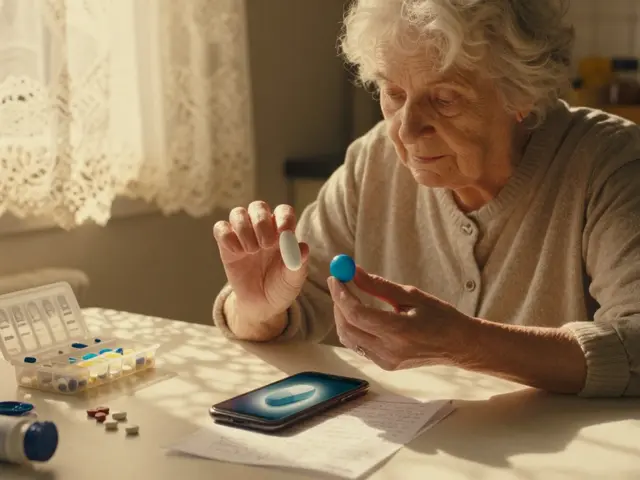Lamisil (terbinafine): what it treats and how to use it safely
Lamisil (terbinafine) is an antifungal medicine commonly used for athlete’s foot, ringworm, jock itch and nail fungus. It comes as a cream, spray, or oral tablet. Topical forms work well for skin infections; the oral tablet is usually prescribed for stubborn or nail infections that don’t respond to creams.
How it works: terbinafine blocks a fungal enzyme needed to make ergosterol, a key part of the fungal cell membrane. The fungus weakens and dies. That’s why you often see skin symptoms improve faster than nail problems — nails need time to grow out healthy.
Typical dosing: for skin problems you’ll often use a cream once or twice daily for 1–4 weeks. For nail infections the common oral dose is 250 mg once daily; treatment is usually 6 weeks for fingernails and 12 weeks for toenails. Always follow the exact schedule your prescriber gives you.
Side effects and safety
Most people tolerate topical terbinafine with mild local irritation. With the oral form watch for upset stomach, headache, or changes in taste. Rare but serious issues include liver injury, severe skin reactions, and allergic reactions. Before starting oral terbinafine, tell your doctor if you have liver disease, take other medicines, or drink a lot of alcohol.
Doctors often check liver function if you’ll be on oral terbinafine for a long course or have risk factors. Stop treatment and call your provider if you get yellow skin or eyes, dark urine, severe abdominal pain, rash, or unexplained tiredness.
Practical tips that help
Confirm the problem. Fungal infections can look like other skin issues. If over-the-counter antifungals don’t help within two weeks, see a clinician. A quick test or a doctor’s exam can confirm the fungus.
Be patient with nail fungus. Nails grow slowly. Even after the infection is gone it can take months to see a normal nail. Keep nails trimmed and filed, and follow the full treatment course — stopping early often causes relapse.
Prevent reinfection: keep feet dry, rotate shoes, use breathable socks, avoid walking barefoot in locker rooms and public showers, and clean or replace old footwear if needed. Over-the-counter antifungal powders can reduce moisture in shoes.
Drug interactions and special situations: terbinafine is processed by the liver and can interact with some medications like certain antidepressants, beta-blockers, and statins. Pregnant or breastfeeding people should consult a provider; oral terbinafine is generally avoided during pregnancy.
Buying Lamisil: buy from licensed pharmacies. Generic terbinafine is effective and usually cheaper. Avoid sellers that promise fast pills without a prescription for oral treatment. If unsure, ask a pharmacist or clinician.
If you have symptoms that get worse or don’t improve after proper treatment, see a dermatologist — they can offer tests, stronger options, or procedures that work when creams and pills don’t.
Alternatives include fluconazole or itraconazole for specific cases; these have their own risks and interactions. Over-the-counter remedies often fail for nail infections. Talk to your doctor about the best choice, monitoring needs, and likely treatment length so you can plan ahead today.

Lamisil: The Complete Guide to Terbinafine for Fungal Infections
This article dives deep into Lamisil (terbinafine), explaining how it works, what conditions it treats, and tips for getting the best results. You’ll learn the science behind its effectiveness, possible side effects, success stories, and smart hacks for using Lamisil safely. Whether you’re dealing with athlete’s foot, nail fungus, or ringworm, you’ll find clear, practical info tailored for real life. Canadian facts and relatable tips make it especially useful if you want honest answers about this powerful antifungal medication.
Read More



